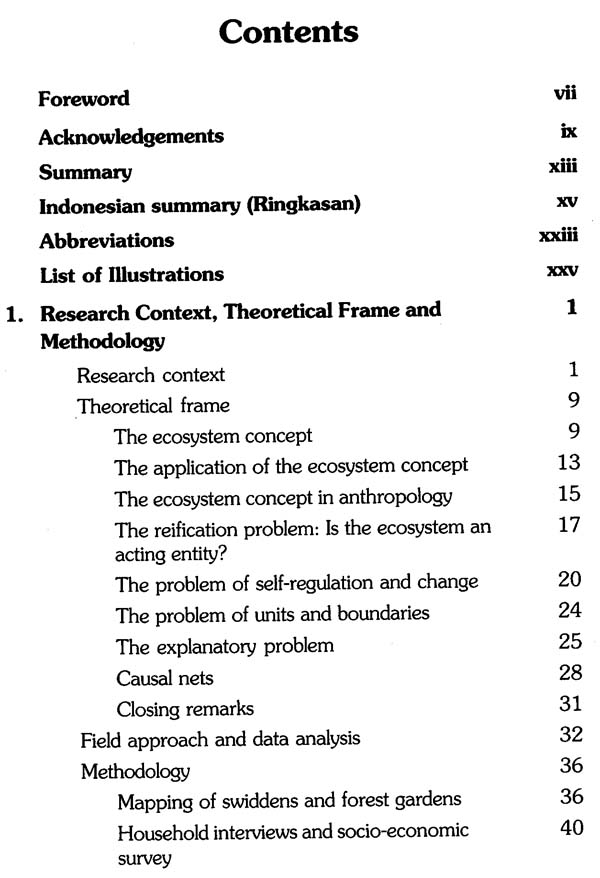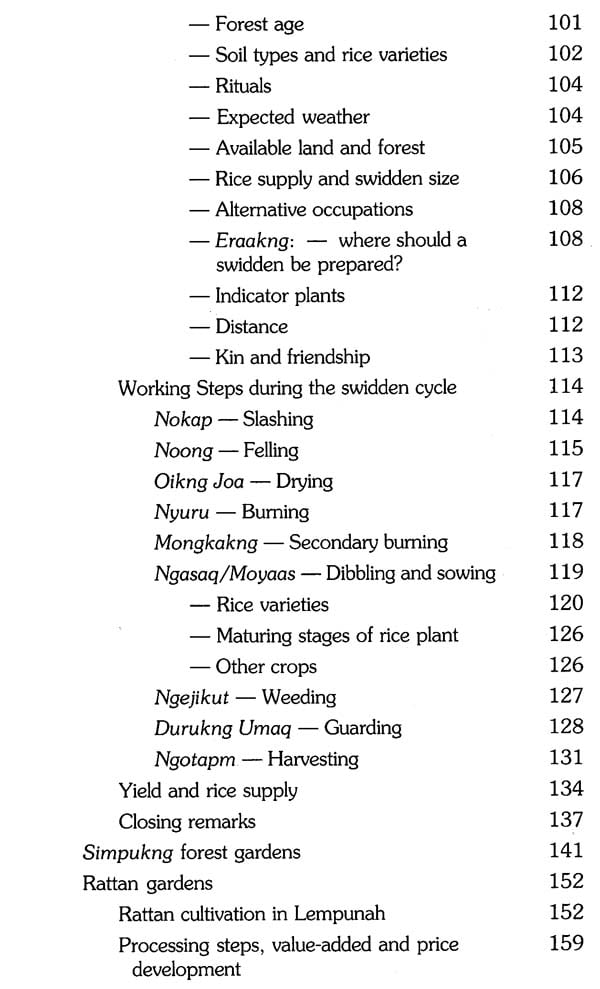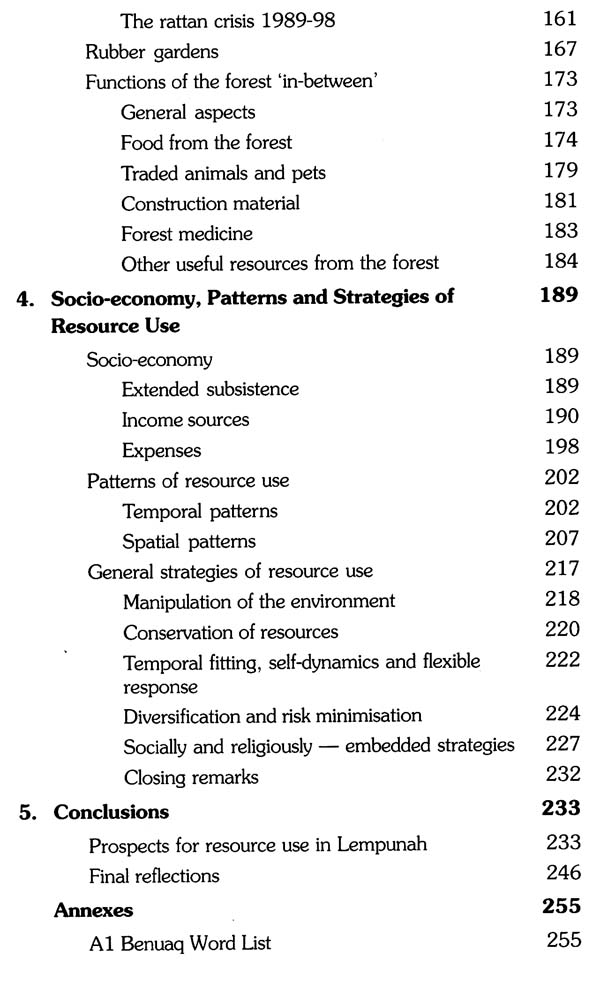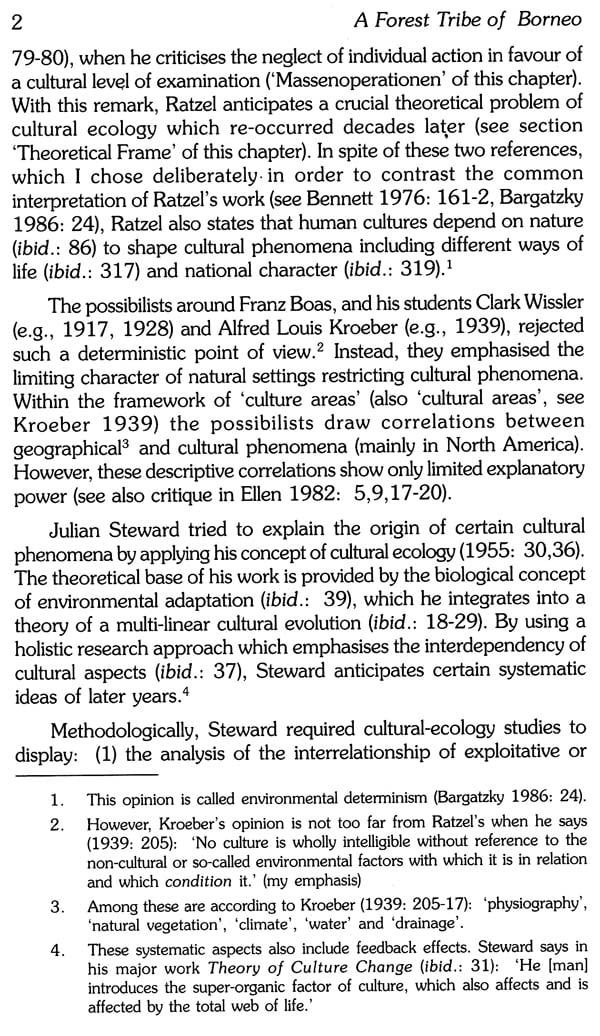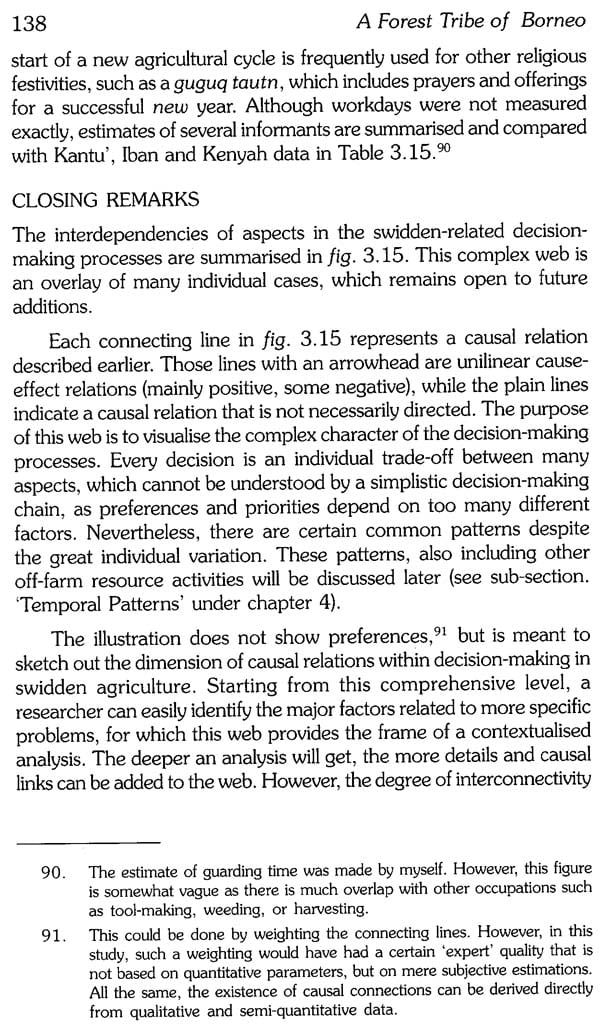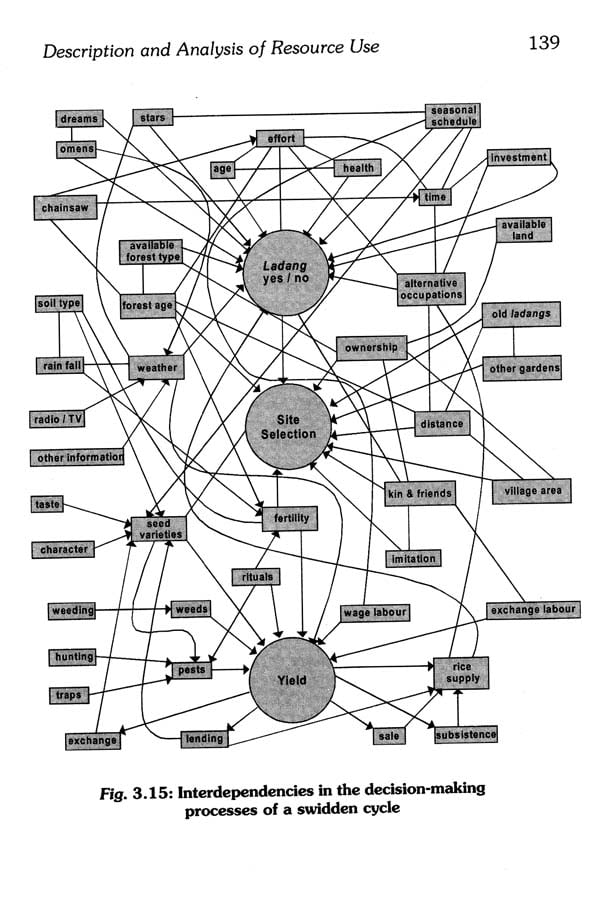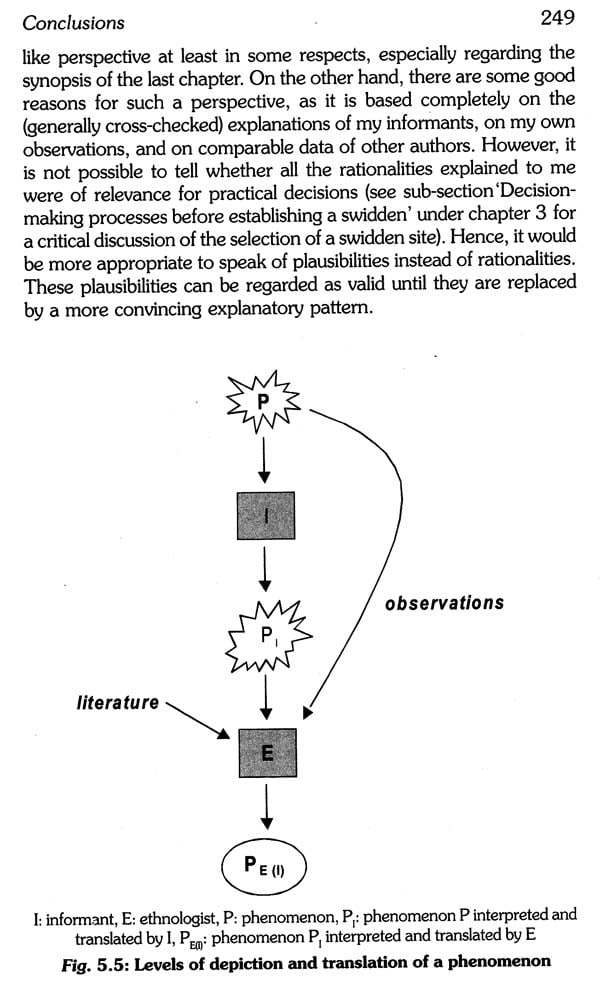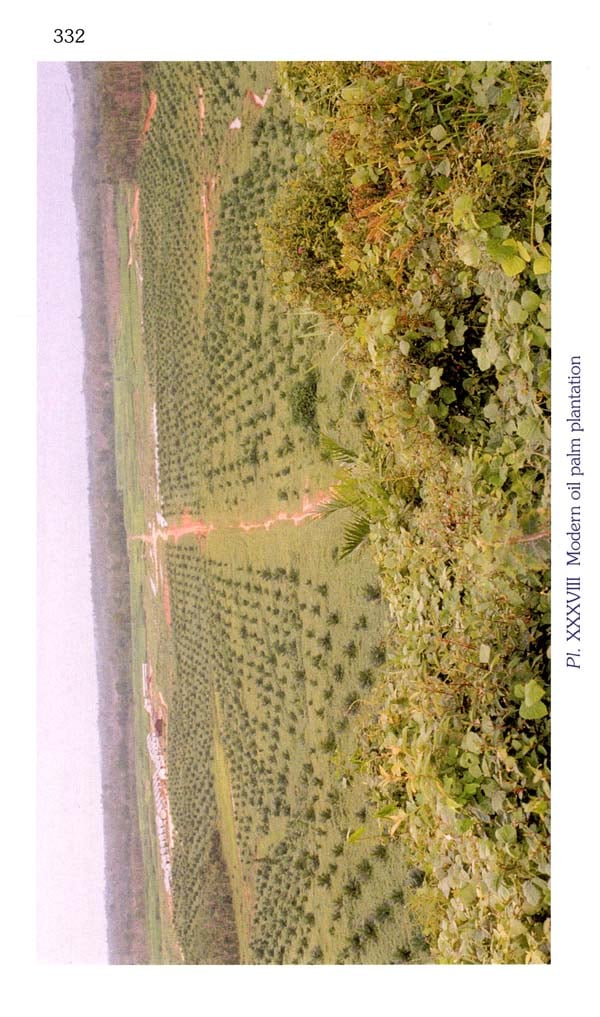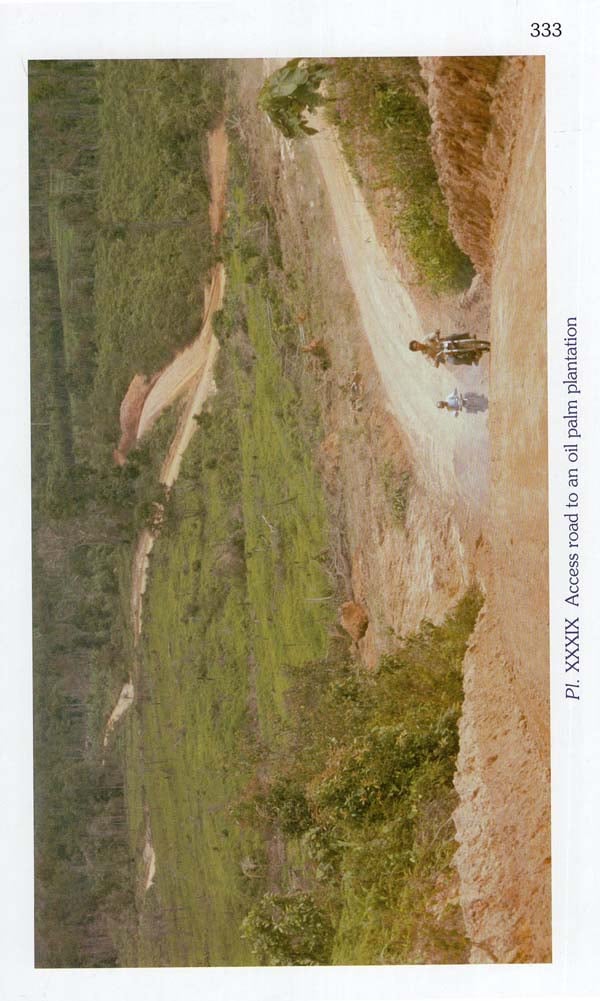
A Forest Tribe of Borneo (Resource use among the Dayak Benuaq)
Book Specification
| Item Code: | NAW019 |
| Author: | Christian Gonner |
| Publisher: | D. K. Printworld Pvt. Ltd. |
| Language: | English |
| Edition: | 2002 |
| ISBN: | 8124601933 |
| Pages: | 366 (44 Colored Illustrations) |
| Cover: | HARDCOVER |
| Other Details | 8.50 X 5.50 inch |
| Weight | 800 gm |
Book Description
Here is the third volume in the series Man and Forest: a series trying to highlight the relevance of ‘indigenous knowledge’ of various tribal communities in the sustainable management of forests/local resources against the growing challenges of environmental hazards and a declining resource base.
The volume takes the reader to the Dayak Benuag village of Lempunah in Borneo (East Kalimantan, Indonesia) where, for over three hundred years, the local tribal population has made extensive use of its forest resources. More than a hundred locally-differentiated rice varieties and 150 other crops are cultivated over a mosaic forest of 9,200 ha. Besides maintaining a high level of bio-diversity, Lempunah villagers are managing an enormous reservoir of flora and fauna for their extended subsistence economy, including trade with various forest products over long distances. Market fluctuations and other uncertainties here are coped with by resource diversification and a high dynamic flexibility in switching between the use of resources.
Together with vivid descriptions, Christian Génner offers an insightful analysis of local resource use patterns, covering swidden agriculture, mixed forest gardens, rattan gardens, rubber gardens, and the non- cultivated forest ‘in-between’ and temporal and spatial aspects of life in Lempunah. Christian Génner has, for this study, applied ethnological, ecological, and geographical field-research methods.
Christian Gonner is a_ biologist by profession, with specialised interests in ornithology. He also studied ethnology for years before his research work in Borneo. Indisputably a scholar with varied academic and research concerns, he is today recognised as a_ leading specialist in Applied Ecology, whose approach to resource management practices unites knowledge of natural and social sciences. Presently living in Sumatra with his family, Dr. Gonner is working for a nature conservation project. He has also been a consultant to several Indonesian development projects from time to time.
SCIENTIFIC knowledge of local communities in developing countries with by and large sustainable management practises has a great ecological and political value for the global environmental protection agenda. The material Christian Gonner is providing and interpreting is a valuable contribution to understand an indigenous conceptualisation of local resource use and forest management. It shows a remarkable . geographical range of marketing and trade that transcends the widespread common notion of locally bound subsistence economies. The highly flexible modes of subsistence and trade of the Dayak Benuaq who live in Borneo (East Kalimantan) under conditions of economic uncertainty have been discussed with the author and are partly reflected on the background of experiences which were made in a research-network on the indigenous use and management of forests in the wider Himalayan context over the last nine years. The research network was initiated and co-ordinated by the Chair of Forest Policy and Forest Economics at the Swiss Federal Institute of Technology. The book is the author’s PhD dissertation, in which one of the editors of this series acted as co-guide. It is the result of true interdisciplinary research and reasoning taking methodologies from the natural and social sciences into account.
This analysis of the lifestyle of the Dayak Benuaq of Lempunah village is published in a phase of transition, a time when their traditional mode of production and resource management is challenged by new and powerful interventions from outside. Economic and political interests have ventured into the interior of Borneo’s forests and change many conditions which have been essential to lead an almost independent tribal lifestyle over centuries. However, it is most interesting to gain a detailed insight into what a traditional tribal life- style was and, to a certain extend, still is and how it reflects the various adaptations to local environmental conditions.
The conditions that prevail in Indonesia today show the limitations of such communities as the Dayak Benuag to survive in continuation of their traditional patterns of resource use. These and their social norms and cultural values related to them are not only threatened by the pervading power of an emerging nation state and economic penetration of remote areas due to international commercial interests. A tribal society which is at the cross-roads of various options of a modernised, or better to say, post-traditional way of life has nothing else to rely on but its age-old cultural identity and mode of production to make a living from. In the long run, and this can be seen from the rationale applied in the Dayak Benuaq’s resource use patterns, their chance to adapt themselves to new socio-political conditions will largely depend on a timely transformation of their flexibility to react to environmental and any other changes.
Case studies such as the one presented in this book do not only contribute to the knowledge about a tribal life world which is fading away almost without being noticed. They are valuable because of their intricate knowledge of what is known by a forest dwelling culture who has appropriated the spirit and wealth of a world which was hitherto unknown to outsiders. They will always have their message to convey to the academic world and to political decision-makers who are trying to promote sustainability of resource use in the twenty-first century. Perhaps they can all learn from this forest tribe of Borneo.
